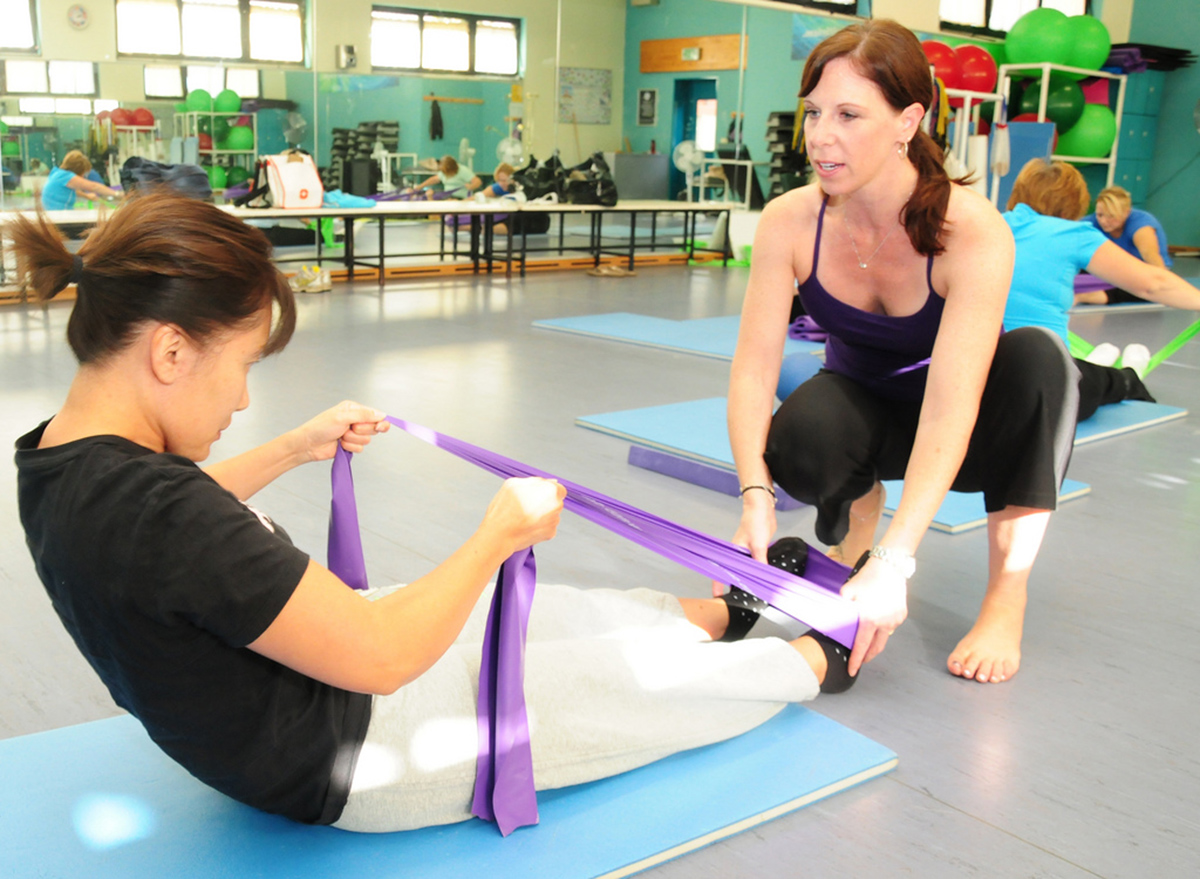When you're away from home, you're away from your normal routine too. Whether it's a holiday, a family visit or a business trip, most of us don't have the space in the car to take a home gym setup with us. Even allegedly fully-mobile training systems like the TRX might get you a few funny looks in your brother's house or when you visit your grandma. No, what's needed is a setup that lets you train the same way you normally train, without having to carry heavy equipment or lose time looking for a gym in a place where you're only staying for a week or just a few days.

Exercise bands basically come in two flavors: soft and hard. Soft bands cost anywhere from $2 to about $10 or $10 and offer anything up to about 15 or 20 pounds' resistance. They're really for less strength-intensive training, so they're good for rehab or flexibility training. Hard bands can cost up to $80 or so and come in resistances that can top 200 pounds. These are popular with Crossfitters and powerlifters who want to alter the type of resistance they encounter. Crossfitters often use them to allow someone to get the feel for a bodyweight exercise like a pull-up or a muscle up that they're not really strong enough to do yet, while powerlifters use them to train for bar speed and allow for resistance across the whole of a movement. For example, when you perform a deadliest, you're in a more mechanically advantageous position at the top of the lift, so you're subjectively experiencing less downward force from the bar. Add chains or bands and the force increases as you lift, stressing you throughout the movement.
So Much For What Others Want Bands For: What Do We Want Them For?
Bands offer three huge advantages: They're versatile, portable and cheap. What, $80 cheap? Yes, for a system that will allow you to do a range of basic exercises with virtually no modifications, that will fit in your pants pocket and that requires no set-up or maintenance.
How versatile are they? Enough that you can basically do the same movements you would in the weight room with your band. That means you can get a bare-bones session anywhere: hotel room, relative's spare room, wherever.
For the purposes of this article I'm going to assume that you know how to warm up without any cardio equipment and that you build your training around basic barbell moves. There are other ways, of course, but if you're a bodyweight buff or an advanced yogi you hardly need advice from me on how to make those all-but-equipmentless training methods portable. I'm also assuming that you have no preexisting issues apart from the slightly iffy thoracic spine and underpowered hip and upper back external rotation that most of us share since we began sitting down for a living.
See Also: Too Much Exercise: How Excessive Workouts Can Affect Your Body
The 3-Move Do-Anywhere Band Workout
OK, so you've warmed up. Now what?
1: Squats
If you start with squats and get interrupted, at least you've done something worthwhile, and incidentally covered the most effective single movement in terms of hormonal effects and (arguably) CNS recruitment.

Take your band and put it over one foot. Put the band over the heel and midfoot, and consider wearing footwear so the band doesn't hurt your foot. Put your other foot inside the band loop, closer together than your normal squat stance, and step out, stretching the band slightly to trigger your gluteus medialis (and leave you with more band to play with!). Run the band outside your knees.
For back squats, you can run the band over one shoulder, along your upper back and over the other shoulder, then use your hands to pull it into the right place so when you squat the force is along your upper back. You can, with a little wriggling, do powerlifting-style , Olympic style or any other style of back squat fairly easily like this.
You'll like: There's less of a hole because the force is least at the bottom of the ROM.
You'll hate: A band that lets you squat full power won't let you do anything else so you're looking at high-rep squats. Never tried 20-rep squats? Now's your chance. You can thank me later...
2: Deadlift
Loop the end of your band round each foot and stand in your normal deadlift stance, with the slack of your band between your feet, then simply pick it up and deadlift as normal.
You'll love: a band is easier on the shins than a barbell and grip is less of an issue too.
You'll hate: the opportunity to work your upper back at the same time by 'tearing the band in half' as you pull. It pays off, though!
3: Bench
We can replace bench presses with pushups effectively. No, it's not quite the same motion but it carries over and requires no bench. Set up in the pushup position with the band across your shoulders and the ends under your hands. Ideally the band will run under the spine of your shoulderblades and will offer increased resistance as you press.
You'll like: it's a more natural range of motion than benching, but the additional resistance makes it something way more than a normal push-up so you're getting the satisfaction of benching!
You'll hate: the extra core work as you can't arch your way out of the bottom of a pushup. You can skip planks at the end though!
See Also: Kettlebell Workout For Everyone
So that's it: the big three, anywhere, with just a resistance band. You do need to make sure you buy one with an appropriate level of resistance and you won't get the training effects of really serious heavy squats, deads and benches but you can still get a respectable workout in as much floor space as it takes to do a pushup, and with equipment that costs little and weighs nothing. Enjoy!
If you like what you've read here, or you think I've missed out something important, get in touch via the comments section below!
- Photo courtesy of familymwr via Flickr: www.flickr.com/photos/familymwr/5032496501
- Photo courtesy of eblaser via Flickr: www.flickr.com/photos/evanblaser/5984029193


Your thoughts on this